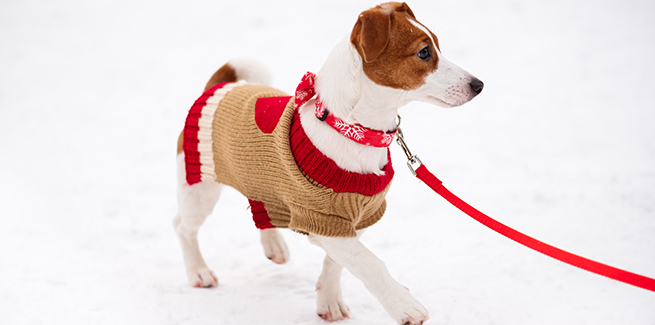Curbside in the cold

It’s getting colder out, depending on where your practice is. And curbside is about to get more complicated.
Summer’s end is expected to bring a predicted spike in COVID-19 cases as people spend more and more time inside. Given the heightened risk and the falling temperatures, how can veterinary staff and their clients stay safe (and warm) while handing off pets in a chilly parking lot?
Many are already thinking ahead to practical considerations such as dedicated cold-weather gear for curbside staff; keeping parking lots, sidewalks, and steps clear of snow and ice; and placing plenty of coat hooks and boot trays by the front door.
Less obvious are the steps hospitals should take to maintain COVID safety protocols as cold weather comes into play.
NEWStat asked J. Scott Weese, DVM, DVSc, DACVIM, for his thoughts. A contributing reviewer of the 2018 AAHA Infection Control, Prevention, and Biosecurity Guidelines, Weese is the author of a series of in-depth guides on COVID-19 safety protocols for hospitals on behalf of the Ontario Veterinary Medical Association. All are available on his Worms & Germs COVID-19 Veterinary Resources page.
Weese comes by his cold-weather expertise by virtue of geography. He lives in Canada and knows a thing or two about caring for animals in cold-weather climes.
“It’s a challenge, and there’s no one-size-fits-all approach,” Weese tells NEWStat. “It’s definitely an issue in Canada.” That’s because it snows there. A lot.
Weese says the COVID-19 safety protocols hospitals have been following indoors will remain pretty much the same with the advent of cold weather. The overall goals remain to:
- minimize the number of people in the hospital and the length of time they spend there—especially in the same areas, and
- maximize social distancing and the use of personal protective equipment.
Curbside service, he says, can still work in cold weather, especially if there’s a good spot for clients to drop off their pets and leave. That could be a place to pull up at the curb out front or ample space in an adjoining parking lot—although, he notes, it’s not ideal to hand off pets in a lot full of idling vehicles huffing out carbon monoxide as people huddle in their cars and try to keep warm.
But telemedicine, Weese says, is what will make the biggest difference, by reducing the number of patients who need to be seen. Telemedicine can be used to show clients what a wound should look like, how to dress and change bandages, and what to monitor, so that inpatients can be discharged at the curb without the client needing to come inside at all. That keeps everyone safer, and makes it easier to do curbside service with the rest.
Hybrid appointments help, too. “For example, if a new puppy visit is first done by phone, all the relevant issues can be discussed. So the next day, the puppy just needs a quick curbside appointment for an exam and vaccinations,” Weese said.
Using telemedicine and curbside drop off to limit the number of clients entering the hospital is also critical to doing things right inside, where foot traffic may be higher due to colder weather. Weese says it’s important to adjust the lobby layout to maximize social distancing and direct movement through the hospital to minimize client-staff contact.
If an owner has to come inside because they took a bus or a cab to the hospital in lousy weather, staff should escort them directly to an empty exam room. Weese recommends doing the initial consult virtually but says it can even be done by phone from the exam room after arrival. Then, with everyone masked, staff pop into the room, maybe have a quick, socially distanced chat, and take the pet to the back. Afterward, the owner pays right in the room, then leaves—ideally through a side or back door to avoid lobby congestion.
Doing all this, Weese says, limits what he calls “the three Cs: closed spaces (i.e., small rooms with poor ventilation), close contact, and crowded spaces.”
Weese even adds a fourth C: continuous, because it reduces the amount of time that some or all of the other three Cs come into play. “You can get by using a small, poorly ventilated exam room if there’s little to no interaction in the room, if any interaction that does occur happens at a distance, and if, ideally, the door is kept open to facilitate ventilation,” he says.
Weese says that the solution to managing COVID-19 risk in cold and icy weather is to combine all of these modalities to keep as much distance between clients and staff as possible. The default, he summarizes, should be a combination of curbside and telemedicine, and “having people inside the hospital only when it’s necessary—for example, when it’s a difficult case and the owner requires a one-on-one discussion or demonstration with the pet present.”
So before the weather turns ugly, figure out which rooms you’re going to put those shivering pet owners in, and how to do it fast, so staff and pets won’t be outside any longer than they have to be.
’Cause winter’s coming, and it’s gonna get cold by the curb.
Photo credit: © Gettyimages/alexi_tm



